
While the days are getting shorter and the nights are getting colder, your yard can still delight, at least for a little while longer. Growing trees with vibrant fall colors is one way to do this, adding interest to your yard despite the change in seasons. Japanese maples, Acer palmatum, have long been planted and adored for their unique leaf color. Yet, several native tree species are just as colorful and impactful, offering a stunning alternative to the non-native Japanese maple.
Growing native trees, such as dogwoods or serviceberry trees, will not only provide a spectacular seasonal show but also support your local ecosystem. Native species are known to attract birds, bees and butterflies with blooms and berries at different times of the year - and what gardener wouldn't want their yard to hum and buzz with pollinators?
So, why not consider adding a North American tree to your borders this year that will perfectly complement your other fall-blooming native plants? Our expert-approved guide reveals five of the best options to plant in early fall and enjoy for years to come.
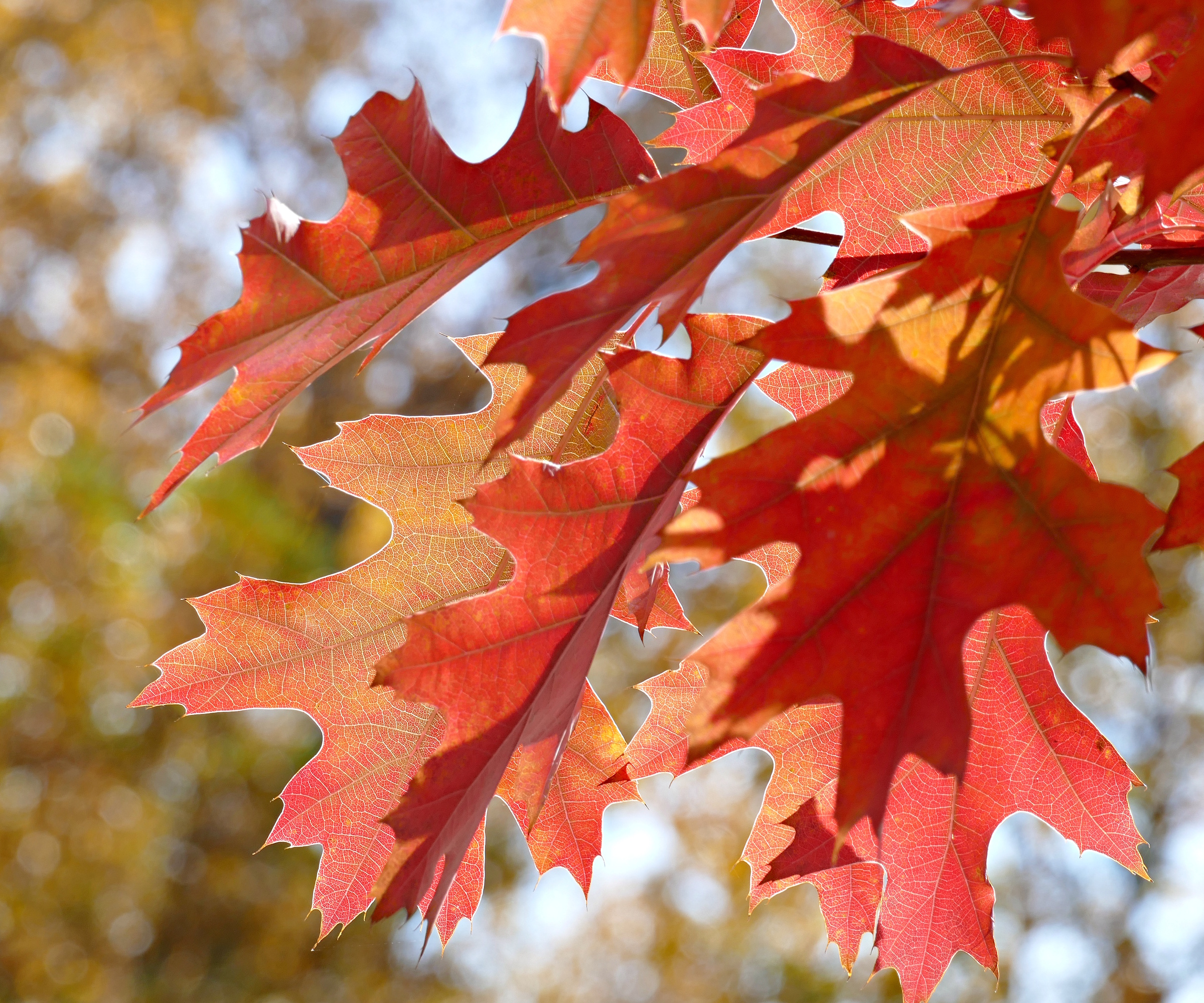
5 native alternatives to Japanese maples
Growing native plants that are well suited for your US hardiness zone will ensure that your borders thrive despite challenging temperature and weather fluctuations. Native species have evolved and adapted to their environments over many thousands of years, often developing special relationships with insects and animals in local environments. Where possible, gardeners are today encouraged to plant native species in backyard borders and planters, and these five options are some of the best.
1. Serviceberry (Amelanchier)

As a professional gardener, I have planted and grown serviceberry trees, Amelanchier canadensis, in several gardens across London. This medium-sized tree, growing no bigger than 15-25 feet tall, looks particularly impressive when grown as a multi-stem specimen.
In my experience, serviceberry trees are easily limited in size with annual pruning. This is best done in late winter before the tree produces new growth and the spring flower show commences. They can also be limited in size by growing in a container, ideal for smaller plots or if you are looking for fall planter ideas.
Growing best in US hardiness zone 4 to US hardiness zone 7, serviceberry trees are found throughout the eastern United States, from Maine to Georgia and as far west as Mississippi. These native trees are prized by many gardeners for their seasonal impact, with white blooms in spring, berries in summer and golden-yellow-to-orange foliage in the fall.
Serviceberry trees are available to order from Walmart.
2. Dogwoods
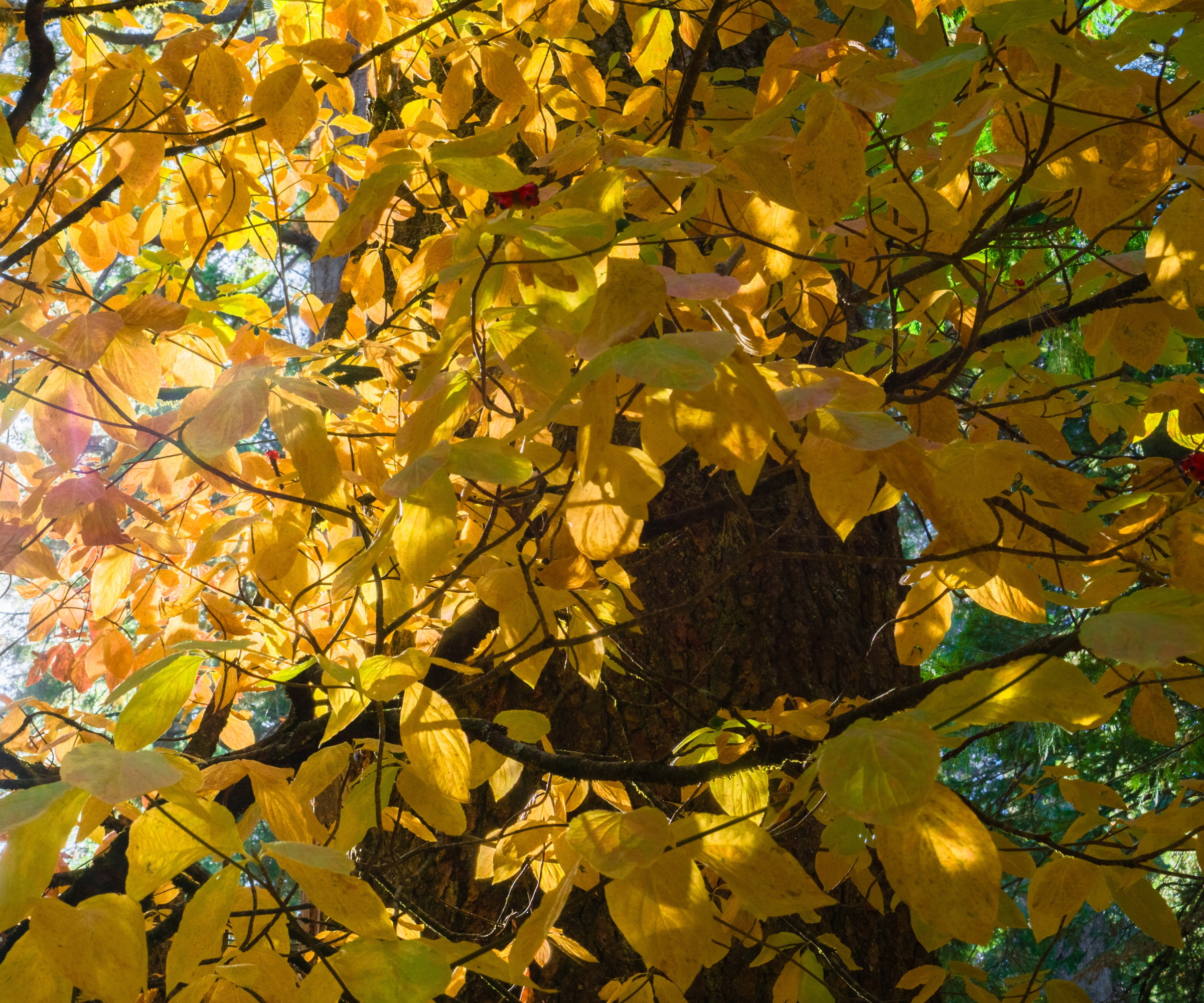
Native dogwood trees are remarkably diverse, growing in a variety of climates and terrains across North America. One of the best options for fall foliage has to be Cornus nuttallii, commonly known as the Pacific dogwood, with attractive yellowing leaves from October.
'The Pacific dogwood grows well in US hardiness zone 7 to zone 9,' says Dr Ross Bayton, Director at Heronswood Gardens in Washington. 'As woodland plants, they will tolerate some shade though flowering will be noticeably better if the tree receives a little sunshine.
'The Pacific dogwood produces large white flower clusters in spring,' Ross continues, before going on to produce 'red fruits in summer and exceptional fall color.' Tree dogwoods like this are 'generally very low-maintenance,' but it is important to prune out dead, diseased or damaged stems on an annual basis in late winter. Without pruning, Pacific dogwoods can reach up to 40 feet tall, but this would take a significant amount of time.
As woodland plants, it is a good idea to mulch Pacific dogwoods each year, with a generous amount of pine mulch, available from Walmart. I suggest spreading a one to two-inch layer around the base of the tree which will keep the soil rich and help to retain moisture in your borders.
Pacific dogwood seeds are available from Amazon.
3. American sweetgum
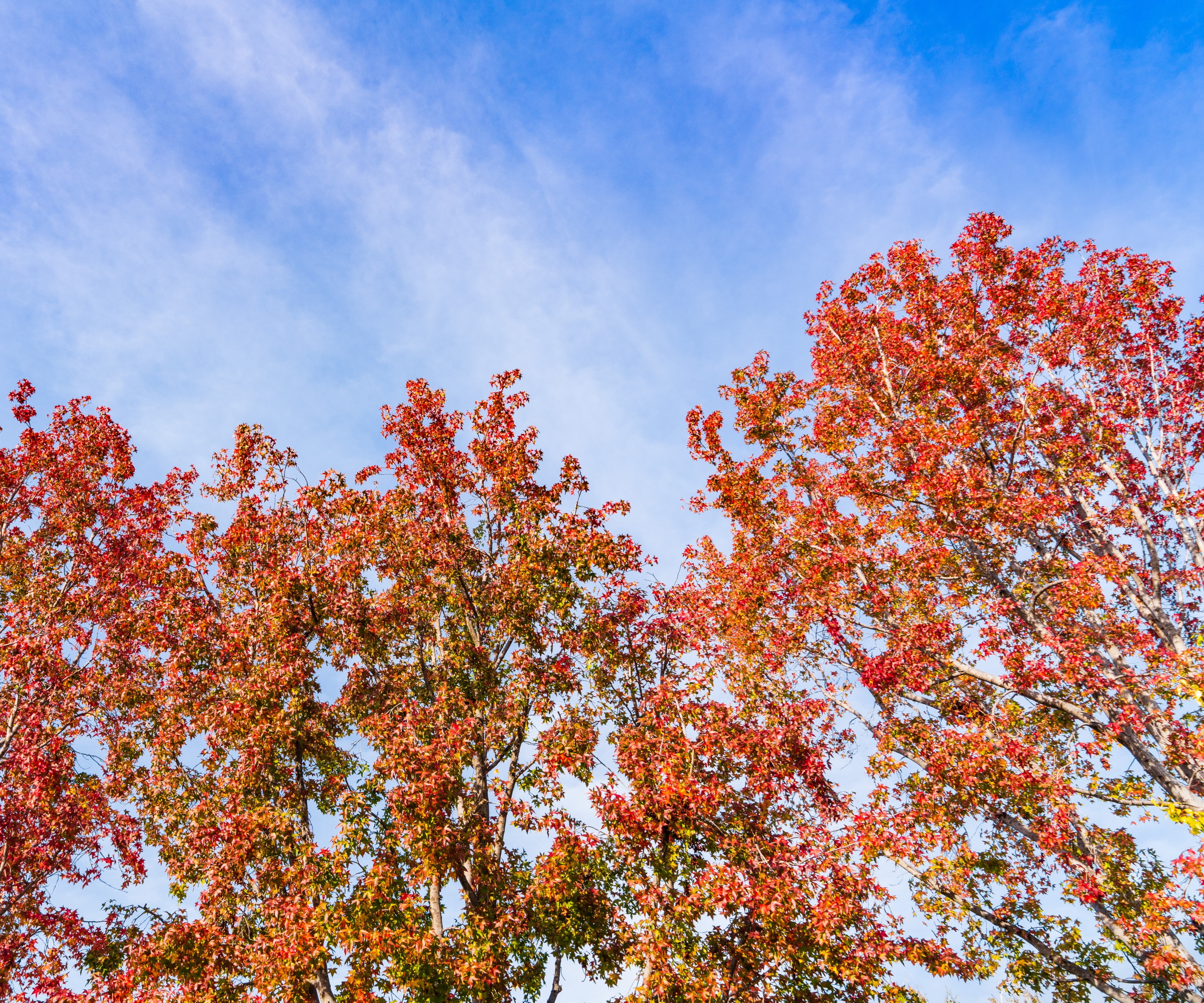
Sweetgum is an iconic native North American tree. Thriving in US hardiness zone 6 to zone 7, sweetgum, Liquidambar Styraciflua, can grow to mighty sizes, often reaching 80 feet plus and living for hundreds of years.
For this reason, it is often considered a tree never to plant in a small front yard, which is good advice to follow when selecting trees for your plot. However, if you do have a smaller space, sweetgum can be grown in a planter, which will limit its size while still allowing you to enjoy the spectacle of sweetgum in the fall.
While sweetgums are prized for their dramatic fall color, with orange and red foliage displays in October and November, they are considered invasive plants in some areas of the US, with vigorous roots and messy fruits considered a nuisance in certain areas, including California. Always do your homework before purchasing and planting a tree, but sweetgum might be better suited to those with long, sprawling yards to allow these trees the space to grow.
American sweetgum live starter plants are available from Walmart.
4. Northern Red Oak
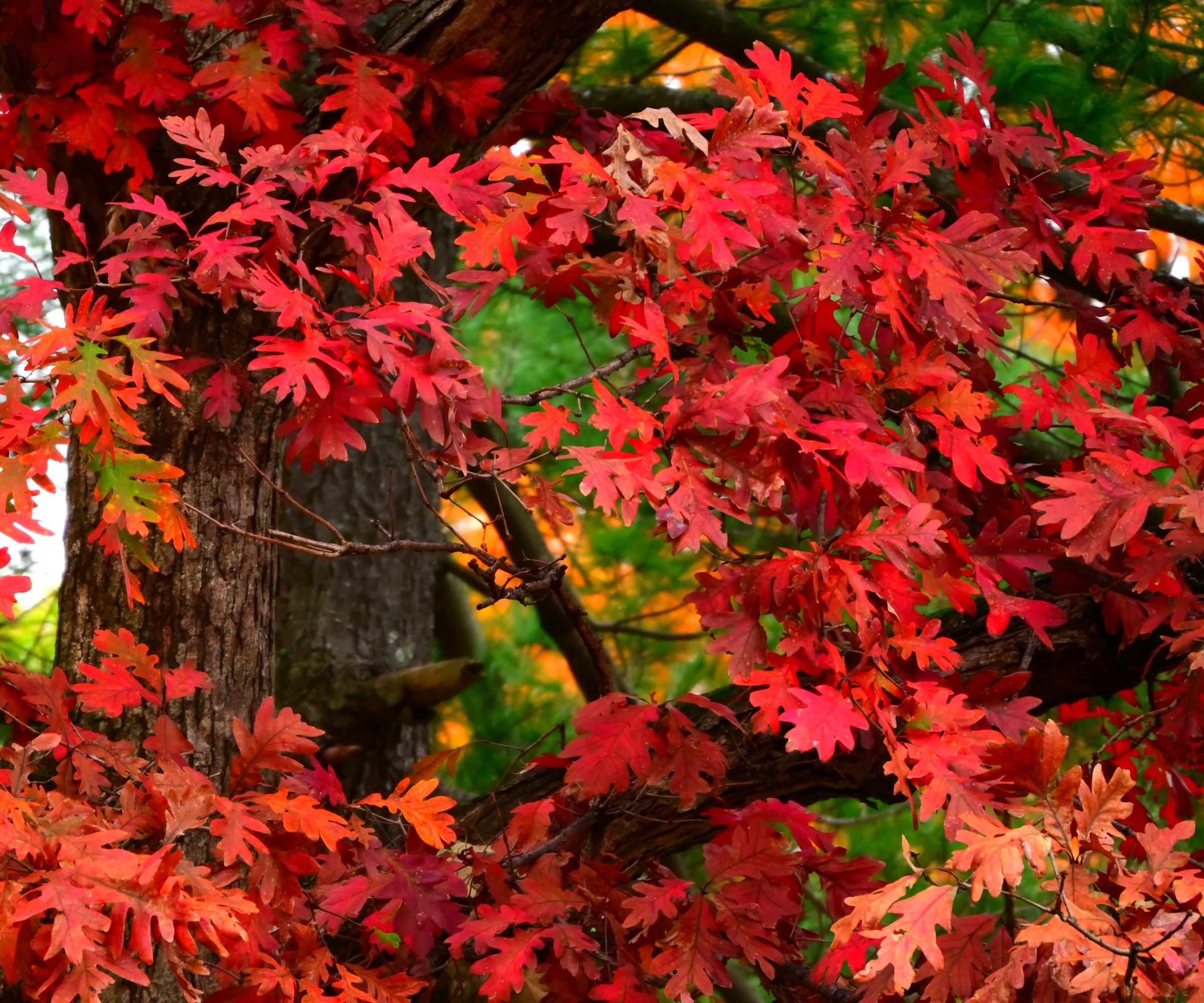
If you are looking for trees with red leaves, the native northern red oak might be the species for you. Growing best in US hardiness zone 3 to zone 7, the northern red oak, Quercus rubra, is a Midwest native, growing wild across states including Illinois, Michigan, Ohio and Nebraska. Fully hardy, this species is well suited to those cooler, northern regions with significant snow storms each winter.
Growing to a height of 60-75 feet if unpruned, the northern red oak can also be grown in large pots in smaller yards, although regular trimming would be necessary to keep it in check. Unfussy, these trees can be grown almost anywhere, so long as there is good drainage and over six hours of sunshine.
As with all oaks, the leaves of this species are notably attractive, although the fall is when the show begins. As seen in the images here, the foliage turns bright red in October, prolonging interest in any yard during the colder months of the year.
Northern red oak live plants are available to order from Walmart.
5. Sweetshrub
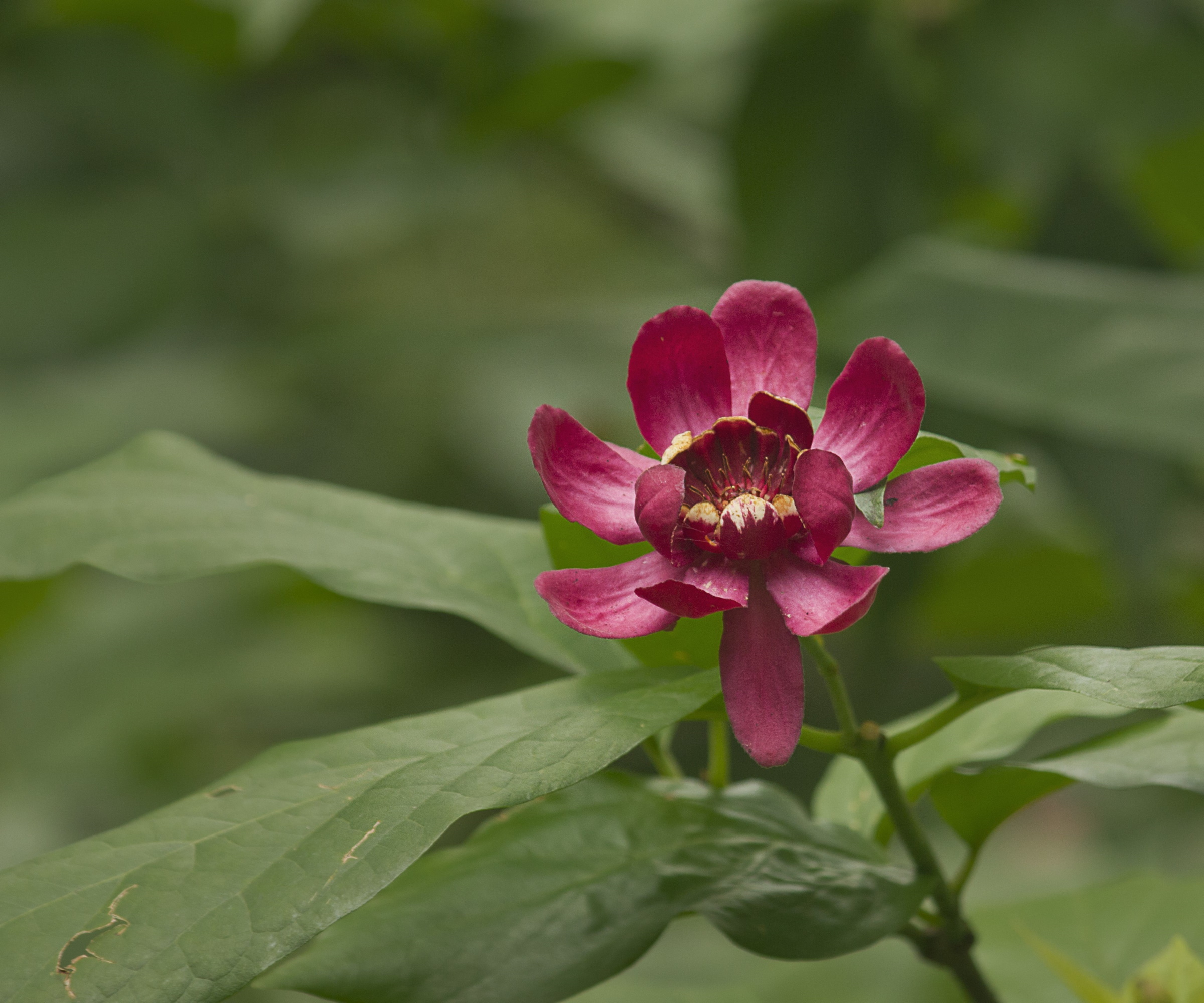
Often considered one of the best fragrant hedge plants, sweetshrub, or Calycanthus floridus, is a southeastern native found growing across Florida, Georgia and Alabama. Growing best from US hardiness zone 5 to US hardiness zone 10, the flowers of this small tree (or shrub) are often maroon or crimson, as seen in the image here.
'Sweetshrubs are famed for their fragrant blooms,' says Gail Pabst, gardening expert and Marketing Director for the National Garden Bureau. 'Some smell like citrus, banana or strawberry, making this ideal for those seeking a fragrant tree in the yard. Sweetshrub is helpfully a versatile plant,' Gails continues, 'and grows beautifully whether planted in full sun or deep shade.'
Ideal for smaller yards, sweetshrubs do not tend to grow taller than 15 feet tall and respond well to pruning to keep them shapely and well-maintained. Come fall, the lush green foliage turns bright yellow before dropping in the winter.
Sweetshrubs are available to buy online from Perfect Plants.
FAQs
When is a good time to plant native trees in my yard?
While this will vary for different tree species and where you live, the general rule is that fall and winter are optimal seasons for tree planting, doing so when the tree is dormant. I find that October and November are ideal months to get new trees in the ground, so this is a job to add to your fall gardening checklist. Always check the weather forecast, however, and avoid planting if there is frost or snow expected within the next week or two.
Plant one or more of these native species alongside native shrubs, like viburnums. The maple leaf viburnum, Viburnum acerifolium, is native to eastern North America and can help to add interest to borders in the fall and winter months. Our guide on how to grow viburnum has all the information you need to ensure that these winter-interest shrubs thrive in your yard.
These attractive leather gloves are heavy-duty, and ideal for digging and pruning in the fall and winter months.







